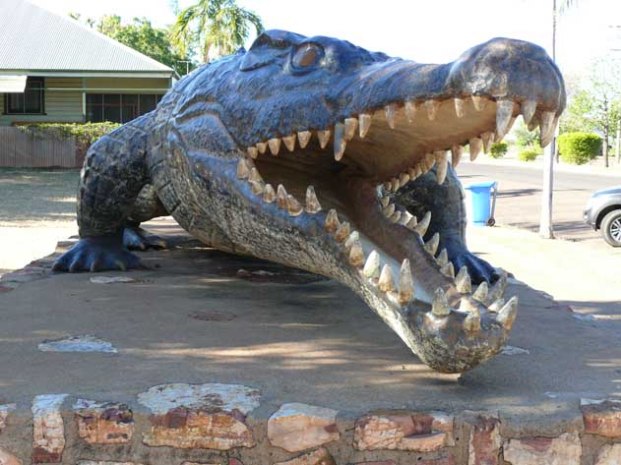There are hidden treasures in the great grasslands of north-west Queensland and not all of them are gold and sapphires, as I discover on a drive along the Savannah Way
Unexpected warmth emanates from the cavernous tunnel before us. Its source is not the river of hot molten lava that formed this high semi-circular “tube” – that cooled about 190,000 years ago. Hardy bushes now grow in the tumble of rocks at its entrance.
It comes in waves as if the cave is breathing.
Behind us the temperature is dropping as the sun sinks towards the dry savannah horizon. We wait patiently, eyes keenly peeled for any sign of movement. But the warmth endures as the sun sets over the savannah behind us, glowing deep orange.
A faint odour wafts from inside the cave, hinting at what’s lurking inside. I try not to breathe too deeply or make any sudden moves. Voices are hushed as we all focus on the darker depths of the lava tube.
Minutes pass. There’s a rush of air past my shoulder. I duck as movement flits past my face.
These are the scouts, checking if it is time yet. The light is dimming and the flash of wings comes more often, disappearing back into the cave’s depths. My eyes adjust with the fading light.
Before long there is a swirl of 20 or so tiny creatures circling in the cave entrance only metres in front of me, building up confidence to venture past. A 5cm fur-ball zips past me into the cool dusk air – followed by another and another. As if on cue, hundreds of resident horseshoe and bent-wing microbats dart for the surface en masse.
The sheer numbers make them easy prey for pythons which strike from the bushes crowding the cave entrance.
The snakes are more prevalent during the warm summer months – when bat numbers also swell with the breeding season.
A python strikes (look closely for the bat wing as it swallows its prey).
But the call of nature is strong and they continue to run the gauntlet to freedom and food. Finely tuned sonar ensures the bats don’t collide with each other or the humans vying to get a photograph but it is impossible not to duck as they whiz past.
Measuring only 5cm long and with a 10cm wingspan, thousands of the insectivorous microbats emerge from this particular lava tube at Undara every night. The creatures need to eat their own body weight in insects before the sun returns at dawn and play a vital role in the web of life on the savannah.
Our Savannah Guide Ivor Davies says the bat population can swell to a million during the summer breeding season, taking up to 90 minutes to vacate their daytime abode. During winter there can be a steady stream of creatures for 20 minutes or more. The effect is mesmerising.
This is the excitement of the Sunset Wildlife Tour at Undara Experience, a national park-based tourist facility some 275km southwest of Cairns on the Savannah Way, in north Queensland.
The lava tubes are among the longest in the world – more than 90km long – formed as an estimated 23 cubic kilometres of molten lava flowed in rivers from a single volcano across the McBride Volcanic Province. It is one of the longest lava flows from a single volcano in modern geological time, spreading more than 160km to the north-west.
For more details go to: Undara Experience, Undara Volcanic National Park; Ph 1800 990 992; www.undara.com.au
This is just one of the natural wonders of the north-western Queensland section of the Savannah Way, a 3699km trans-national drive from tropical Cairns and the Great Barrier Reef to the remote pearling town of Broome, in Western Australia.








